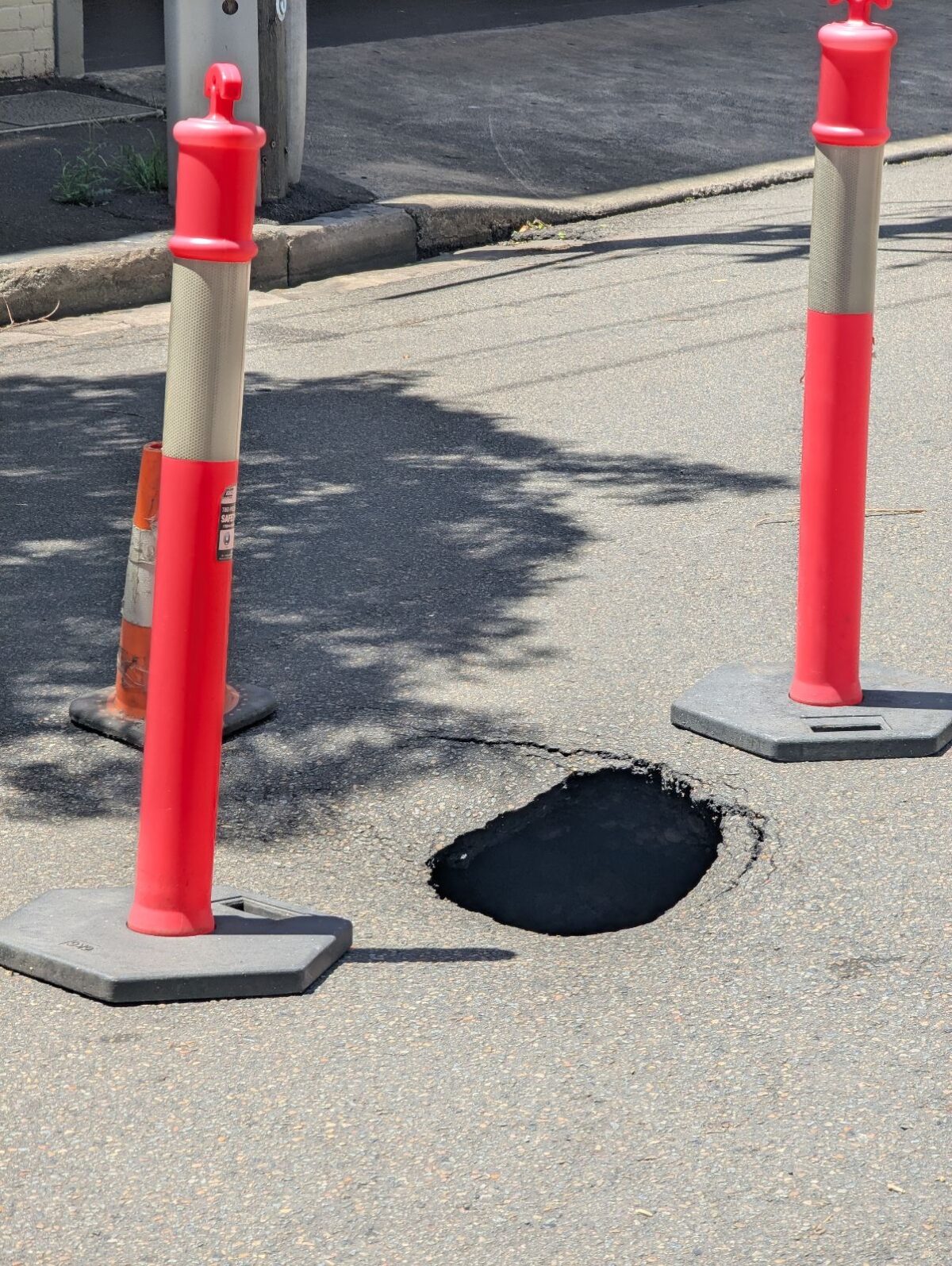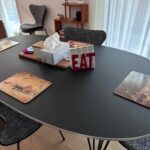Given, you know, everything, I’m looking to move away from Instagram and consolidate everything I’ve posted there to my WordPress blog. Has anyone come across a good way to do this? It doesn’t look like anyone’s done a plugin or anything like that. I have a rudimentary plan, but thought I’d check in case anyone has already solved this…
-
Hamilton reaction
I saw this video linked on Bluesky a few days back, and I’ve spent the last two days bingeing the series. I’m almost up to the end. It’s great! This young guy is a rapper and a music geek who nevertheless hates musicals and somehow hasn’t ever seen Hamilton. He watches a couple songs at a time, pausing to react to what’s happening, call out motifs that are repeating, and analyse how the writing illustrates character. Needless to say, he ends up loving it and gets fully invested in the story. His enthusiasm is infectious.
-

Sinkhole
Apparently a Hellmouth has opened on Grafton Street in Chippendale. That seems appropriate for this week.
-
Facebook detox
In addition to demonetising my Meta data, I’ve decided to take a break from Meta platforms this week. It turns out that it’s surprisingly difficult to log out of Facebook Messenger on your phone, to the extent that I had to dig up a Wikihow article to show me how. Even after I managed to log out of Facebook, Messenger, Instagram, and Threads, they kept showing me a single-click “log back in” option due to some saved profile, which I then had to delete. The fact that they make it so damn difficult kinda reinforces my decision, to be honest.
The only one I haven’t signed out of is WhatsApp. This is solely because my main friend group uses it to communicate, and I haven’t yet figured out how to convince them all to move to an alternative.
Why just a break? Why don’t I delete my accounts? The temptation is definitely there. Sadly, FB remains my main channel to keep up with my family and friends in the US. It’s where I see what my brother and sister-in-law are doing with their cafe this week; it’s where I see whatever dodgy Jeep memes my Dad is laughing at; it’s where I see whatever quilt show in the Midwest my Mom is supporting; it’s where I find out if my college friends in LA are still safe. Instagram is literally the only way I know what’s happening with my young nieces and nephews, who would never be so crass as to text me or talk on the phone. It’s hard. I suspect the way forward will just be to cut my usage way, way back, and to move towards a read-only method of interaction there.
-
Shared today on Facebook
I have to know some Amazon CloudFront experts who have experience with WordPress, right? 😉 I’m having an issue with my personal site. When I set it up, I used the official AWS for WordPress plugin to create my CloudFront distribution (best practice at the time). Guess what? The plugin has since been abandoned, and I’m now having caching issues. As far as I can tell, there is/was zero official AWS guidance on migrating away from the plugin. Anybody encountered this issue before? More info over at my site…
Signing out of FB and all Meta products for the next week. You can find me on my website or other social networks if you need to…
-
Demonetising my Meta data
Mad at Meta? Don’t Let Them Collect and Monetize Your Personal Data | Electronic Frontier Foundation
I just went through and checked all of these settings. Not only is Facebook a privacy nightmare, Zuckerberg’s pivot to right-wing broligarch is sickening. I’d delete my accounts entirely except it’s my main way of communicating with some family members back in the US. At least I can limit how much I contribute to their coffers.
-
Shared today on Facebook
I was excited yesterday to find at a Mittagong antique shop a set of 6 placemats depicting artworks from the famous Australian artist Tom Roberts. Mr. Snook was similarly excited to find a red metal EAT napkin holder for $2 at the Vinnies. 😂❤️
-

Homewares
I was excited yesterday to find at a Mittagong antique shop a set of 6 placemats depicting artworks from the famous Australian artist Tom Roberts. Mr. Snook was similarly excited to find a red metal EAT napkin holder for $2 at the Vinnies. 😂❤️
-
The Myth of the Papal Toilet Chair
It’s weird that a lot of the media I have consumed lately – Wolf Hall, The Tudors, and Conclave – revolves around cardinals and Popes. Yesterday I was talking about papal conclaves with Rodd and he told me in all seriousness that they check the genitals of every papal candidate these days. “What?! No way,” I scoffed. “Yes way! It’s because there was a lady Pope once. They even have a special chair,” he claimed. A few minutes of research later, I crowed as I revealed to him that the papal toilet chair is a myth. He remains disappointed.





Woot, my knee-jerk don’t-overthink-it pub-quiz answer was Iran which seems to be [✓]. I ‘knew’ it was more populous than…